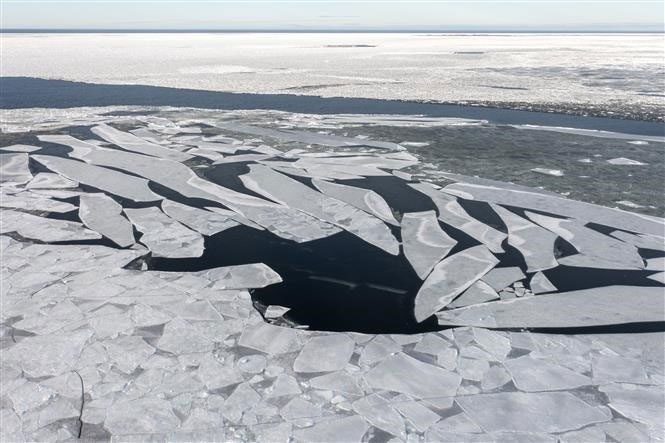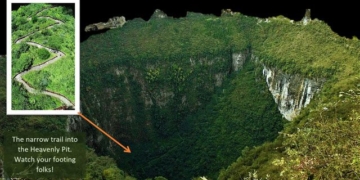According to the latest data released by the National Aeronautics and Space Administration (NASA) on September 25, the area of sea ice in the Arctic may have reached its annual minimum on September 19.
The year 2023 marks the sixth lowest recorded sea ice extent in the Arctic based on data obtained from satellites.

Melting ice in Korsholm, Finland, on January 24, 2022. (Photo: AFP/VNA).
Meanwhile, sea ice in Antarctica recorded a record low maximum extent on September 10, a time when the sea ice in this area should have expanded significantly during the coldest and darkest months of the year.
Scientists monitor the fluctuations of sea ice extent annually and seasonally because sea ice has a significant impact on the polar ecosystems of the Earth and plays a crucial role in the global climate.
Researchers at NASA and the National Snow and Ice Data Center (NSIDC) have utilized satellites to measure the area of sea ice as it melts and refreezes.
They track the sea ice extent, defined as the total area of ocean where the concentration of ice cover is at least 15%, noting that from March to September 2023, the ice cover in the Arctic decreased from a peak of 14.62 million km2 to just 4.23 million km2.
According to NASA, the amount of lost sea ice is enough to cover the entire continental United States.
The sea ice surrounding Antarctica recorded a maximum extent in winter at a record low of 16.96 million km2 on September 10.
According to NASA, this figure is 1.03 million km2 less than the previous record low recorded in 1986.
Scientist Walt Meier, who studies sea ice at NSIDC, stated: “This is a record low for Antarctic sea ice extent.”
This scientist noted that the level of sea ice development appears low across almost the entire region, contrasting with any other area.
Mr. Meier suggests that these changes are a fundamental response that has persisted for decades to the warming temperatures.




















































